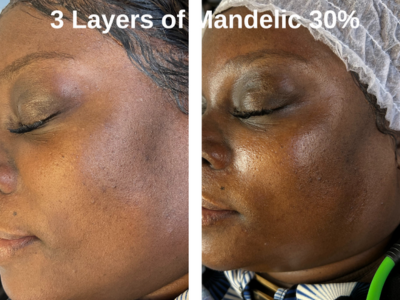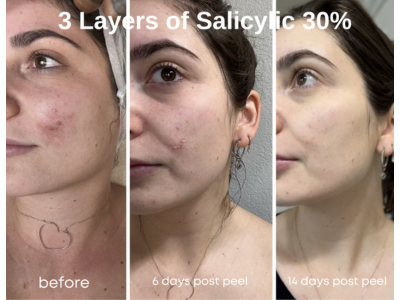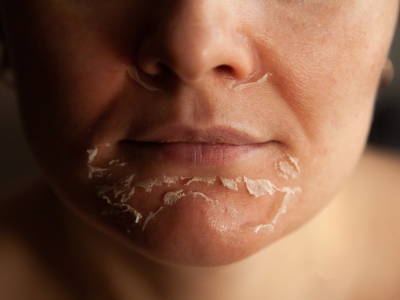Common Types of Chemical Peels
February 8, 2024, 6:39 pm
Types of Chemical Peels
Chemical peels are categorized into three strengths:
Light, Medium and Deep.
The ingredients in the peel together with the length of time it is on the skin determine its strength, how much downtime it requires, and what kind of results you can expect.
Some acids are used for only one type of peel, while others can be used for multiple types depending on the concentration used.
Some of the most common acids and their strengths are listed below with links to product pages on Delasco.com.
- Mandelic Acid – light
- Salicylic Acid – light to medium
- Glycolic Acid – light to medium
- Jessner’s Solution – medium
- Trichloroacetic Acid (TCA) – medium to deep
- Phenol – deep
Light Chemical Peels
A light chemical peel penetrates the topmost layer of the epidermis, the stratum corneum, to improve the skin’s appearance on a superficial level.
The ideal candidate is someone who wants to resolve minor issues with little to no recovery time required. Light peels are often referred to as a “lunchtime” peels because there is no recovery time and theoretically you could get one on your lunch hour.
Benefits of Light Peels
- Reduces blemishes
- Brightens skin
- Controls breakouts
- Fast recovery time
Risks and Side Effects of Light Chemical Peels

Mandelic 30% is a great starter peel for most skin conditions, types and tones.
Medium Chemical Peels
Medium peels penetrate the papillary dermis, below the epidermis, to treat deeper skin concerns that can’t be resolved by light peels.
A good candidate for a medium peel is someone with skin issues such as acne scarring, melasma, hyperpigmentation or any of the various signs of aging.
Benefits of Medium Peels
- Reduces small and shallow acne scarring
- Reduces hyperpigmentation
- Helps reduce wrinkles
Risks and Side Effects of Medium Chemical Peels

Salicylic 30% is a great medium peel for acne.
Deep Chemical Peels
Deep peels penetrate the lower part of the dermis, known as the reticular dermis. The ideal candidate for this peel has skin issues such as deep scars or wrinkles that cannot be treated by milder peels or other skin resurfacing techniques.
Deep peels require sedation, have a long recovery time and carry risk of complications, but they offer dramatic results for issues related to scarring and sun damage.
Benefits of Deep Peels
- Reverses photodamage
- Removes precancerous growths
- Reduces deep scars
While a deep peel can reduce deep scars caused by acne, it is not the most appropriate solution for this skin concern due to the permanent skin changes associated with the procedure.

Risks and Side Effects of Deep Chemical Peels
Looking for a premium chemical peels? Check out Delasco's Jessner's Chemical Peels, Modified Jessner's, and Skin Therapeutic's chemical peel.
Sources:
1 An Overview of Chemical Peels. PMFA Journal. August/September 2016
2 Jessner Peel. thedermreview.com/Jessner-peel. January 10, 2020
3 An Overview of Chemical Peels. PMFA Journal. August/September 2016
4 Types of Chemical Peels. Derm Collective. September 2019
5 Chemical Peels for Skin Resurfacing. NIH National Library of Medicine, National Center for Biotechnology Information. Last Update, October 29, 2023